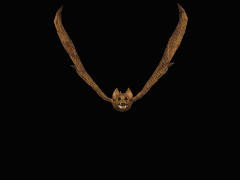


|
Ramphastidae:
Toucans are near passerine birds from the neotropics. They are brightly marked and have enormous colorful bills. The family includes six genera and about 40 species.
Toucans range in size from 18 to 63 cm (7 to 25 in). A bit bigger than a crow, their body is short and thick and the tail is rounded. The tail varies in length from half the length to the whole length of the body. The neck is short and thick while at the base of the head is a huge, brightly-colored beak that measures in some large species, more than half the length of the body. A toucan's tongue is long, narrow, and singularly frayed on each side, adding to its sensibility as an organ of taste.
The legs of a toucan are strong and rather short. Their toes are arranged in pairs with the first and fourth toe turned backward. Both males and females are the same color. The feathers in the genus containing the largest toucans are generally coloured black, with touches of white, yellow, and scarlet. The underparts of the araçaris (smaller toucans) are yellow, crossed by one or more black or red bands, and the edges of the beak are saw-toothed. The toucanets have mostly green plumage with blue markings.
Toucans are frugivorous (fruit-eating), but will take insects and other small prey such as small lizards. However, many other birds consume these foods without the giant bill to help them. So what is the function of the beak in feeding? One likely use is to specialize on prey such as nestlings and bats in treeholes. In this view, the beak is an adaptation to allows the bird to reach deep into the treehole and thereby access food unavailable to birds that would otherwise compete for similar food reasources.
They are arboreal and nest in tree holes laying 2–4 white eggs. The young hatched are completely naked, without any down. They are resident breeders and do not migrate. Toucans are usually found in pairs or small flocks. |
